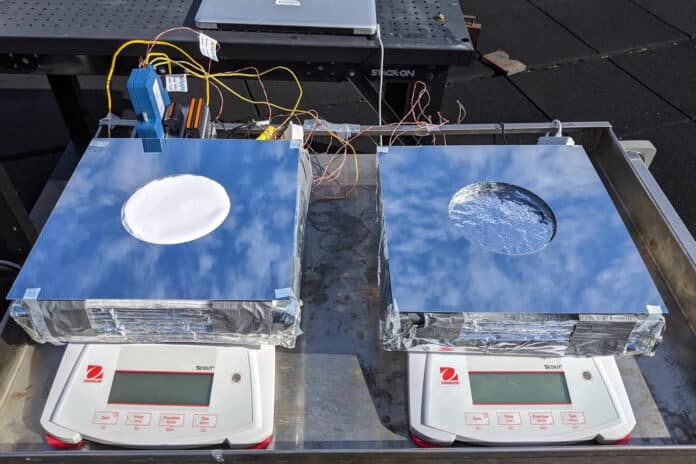Researchers at MIT have developed an innovative passive cooling system that preserves food crops and supplements conventional air conditioners in buildings, with no need for power and only a small need for water.
The new cooling system combines radiative cooling, evaporative cooling, and thermal insulation in a slim package that could resemble existing solar panels. It can provide up to about 19 degrees Fahrenheit (9.3 degrees Celsius) of cooling from the ambient temperature. MIT says the technology could permit safe food storage for about 40% longer under very humid conditions or triple the safe storage time under dryer conditions.
The system takes the form of a solar panel made up of three layers of material, which together provide cooling as water and heat pass through the device. It can be placed over or around the items that need to be kept cool, such as containers of food and medications. The new cooling system could be used to significantly reduce the load on air conditioning systems in buildings by sending cool water to the hottest part of the system while staying just as effective.
The top layer of the system is an aerogel, made up mostly of air enclosed in the polyethylene cavities. The material is highly insulating but freely allows both water vapor and infrared radiation to pass through, providing evaporative and radiative cooling, respectively.
In the middle is a porous hydrogel that is mostly composed of water. This provides the water source for evaporative cooling, as water vapor forms at its surface, and the vapor passes up right through the aerogel layer and out to the environment.
The bottom layer of the cooling system is a mirror-like material, which reflects any incoming sunlight that has reached it, sending it back up through the device rather than letting it heat up the materials and thus reducing their thermal load. The layer keeps the infrared radiation within the sun’s rays from heating the covered item. The top layer of aerogel, being a good insulator, is also highly solar-reflecting, limiting the amount of solar heating of the device, even under strong direct sunlight.
The other materials used in the system are readily available and relatively inexpensive. The only maintenance required is adding water for evaporation, but the consumption is so low that this needs only be done about once every four days in the hottest, driest areas and only once a month in wetter areas.
Journal reference:
- Zhengmao Lu, Arny Leroy, Lenan Zhang, Jatin J. Patil, Evelyn N. Wang, Jeffrey C. Grossman. Significantly enhanced sub-ambient passive cooling enabled by evaporation, radiation, and insulation. Cell Reports Physical Science, 2022; 101068 DOI: 10.1016/j.xcrp.2022.101068
